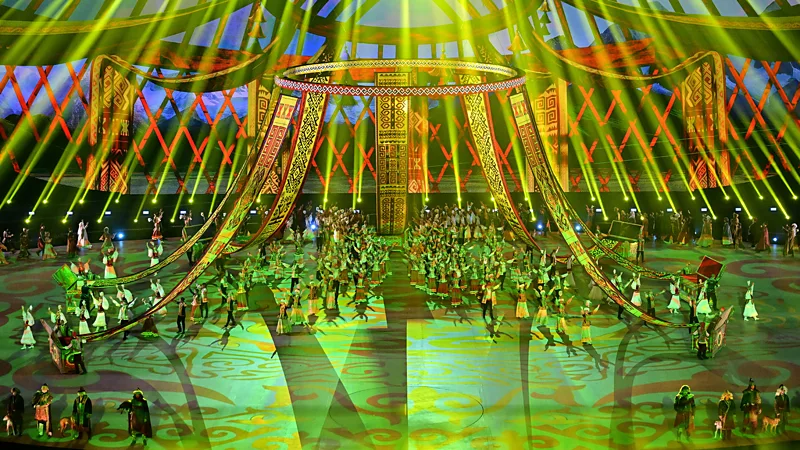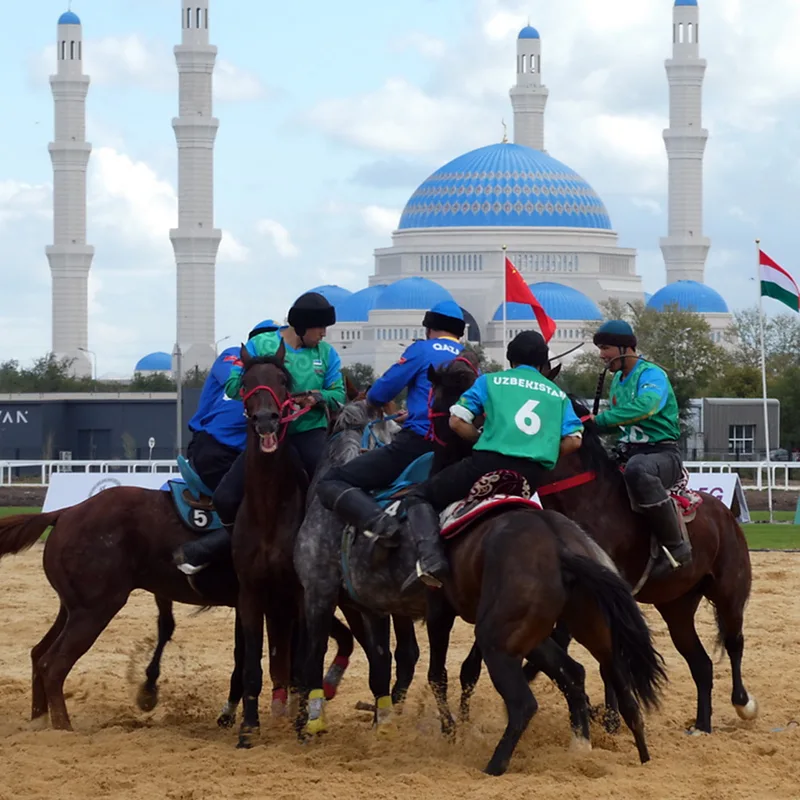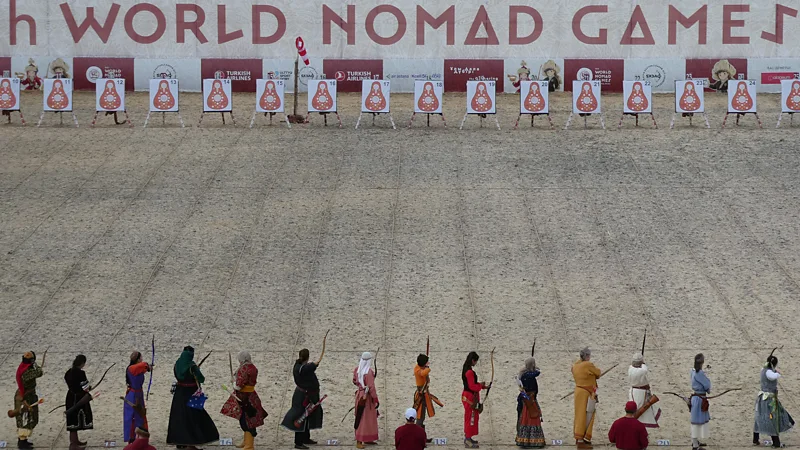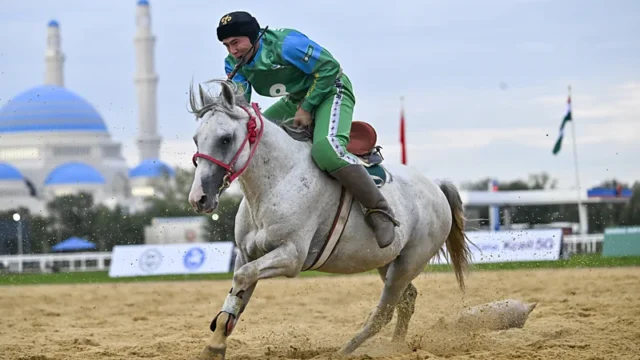Introduction
The World Nomad Games, often called the “Olympics of Central Asia,” is a vibrant celebration of traditional sports, culture, and heritage from across the vast steppes of Asia. The fifth edition of the Games, held in Kazakhstan’s capital, Astana, showcases an incredible blend of ancient customs and modern competition. The event, which began on September 8, 2024, has attracted thousands of athletes from 89 countries. With its roots in the nomadic lifestyle, the Games bring to life a rich tapestry of history, identity, and culture.
What Are the World Nomad Games?
The World Nomad Games take place every two years and celebrate the sports, skills, and culture of nomadic people. The Games serve as a platform to preserve and protect the traditions of Central Asia, which are increasingly threatened by modern global influences. Events include horseback wrestling, eagle hunting, archery, and more, all designed to highlight the physical and mental prowess necessary to survive on the steppe.
This year, the Games have been dubbed the “Great Gathering on the Steppe,” with Kazakhstan proudly hosting the festivities. The event promotes not only traditional sports but also showcases Kazakh food, clothing, and storytelling.

The Opening Ceremony
The opening ceremony on September 8 was a grand spectacle. Over 3,000 athletes from around the world paraded into the arena, while hundreds of musicians, dancers, and singers performed in front of Central Asia’s political leaders. The ceremony traced the history of the Kazakh steppe, depicting scenes from ancient Scythian warriors, Silk Road merchants, and the rise of the Golden Horde. The symbolic yurt, a traditional nomadic dwelling, served as a focal point for the gathering, paying tribute to the region’s history and culture.
Kokpar: The Wildest Sport in Central Asia
One of the most popular sports at the World Nomad Games is kokpar, a thrilling and intense event often referred to as “rugby on horseback.” In kokpar, two teams of horsemen compete to grab a headless goat carcass (made of rubber for safety during the Games) and race to deposit it in the opposing team’s goal. The sport is physically demanding, requiring immense strength, bravery, and skill.
Kazakhstan and Kyrgyzstan are the top contenders in kokpar, and the 2024 final promises to be a dramatic showdown, with over 20,000 spectators expected to watch the event on September 13.
Hunting with Eagles: A Dying Tradition
Eagle hunting is another fascinating sport at the World Nomad Games. This ancient practice, which involves training a golden eagle to hunt, has been passed down through generations in Kazakhstan, Kyrgyzstan, and Mongolia. However, it is becoming increasingly rare due to the time, expense, and effort required to train the birds. The sport is considered one of the most endangered traditions featured in the Games.
Competitions at the World Nomad Games include hunting with eagles, hawks, and falcons. In their traditional settings, these birds are used to hunt foxes, rabbits, and wolves, often during the winter when the animals’ fur is thickest.
Horseback Wrestling: A Test of Strength and Strategy
Wrestling on horseback, known as audaryspak, is another signature event at the World Nomad Games. Athletes compete in a circular arena, aiming to pull their opponents from their horses or force them out of the ring. There are six weight categories, and horses can be penalized if they bite during the match.
In addition to horseback wrestling, the Games feature various forms of non-horseback wrestling, such as kureshi, kurash, and koresh. These wrestling styles come from different Turkic cultures, including Kazakh, Turkish, Tatar, and Kyrgyz traditions. Unlike many other sports at the Games, wrestling includes both men’s and women’s competitions.
Archery: A Link to the Warrior Past
Archery, both on the ground and on horseback, evokes the powerful warrior heritage of Central Asia. For centuries, mounted archers from the steppe were feared across the Middle East and Europe for their skill with composite bows and mastery of horseback combat. Today, archery remains one of the most iconic sports at the World Nomad Games.
Mongolian archer Tsetsegsuren Dorjsuren, reflecting on the significance of the sport, stated, “Chinggis [Genghis] Khan’s blood is in my blood. I feel my ancestors when I pick up my bow.”

Mas-Wrestling: Tug-of-War with a Twist
Another exciting sport featured at the World Nomad Games is mas-wrestling, also known as stick tug-of-war. The sport originated in Yakutiya (modern-day Sakha Republic in Russia) and involves two athletes sitting opposite each other, holding a wooden stick. The goal is to either pull the stick from the opponent’s hands or drag the opponent over to your side. The sport, which has separate categories for men and women, is an intense test of strength and strategy.
The Ethno-Aul: Celebrating Nomadic Culture
While the World Nomad Games are centered around sports, they also celebrate the cultural traditions of the nomadic peoples. The Ethno-Aul, a village-like setting within the Games, features yurts, craft shops, and local restaurants. Here, visitors can watch reenactments of medieval warriors, listen to ancient folk songs, and explore the artistry of traditional Kazakh crafts.
One highlight is the presence of akim—Kazakh bards or storytellers who recite epic poems while playing the dombra, a traditional lute. Their performances captivate audiences and offer a glimpse into the rich oral traditions of Central Asia.
Preserving Traditional Crafts
The World Nomad Games not only promote sports but also strive to preserve traditional crafts. Master artisans, like Bulbul Kapkyzy, demonstrate their skills in weaving, yurt-making, and other handcrafts. Bulbul, an ethnic Kazakh born in Mongolia, moved to Kazakhstan 20 years ago and has been teaching her craft ever since.
Her contributions, along with those of other artisans, help preserve the rich artistic heritage of the nomadic peoples, ensuring that these traditions are passed down to future generations.
Astana: A Modern Backdrop for Ancient Traditions
Astana, Kazakhstan’s capital, provides a striking contrast to the ancient nomadic traditions celebrated at the Games. Known for its cutting-edge architecture, Astana has earned the nickname “Central Asia’s Dubai.” Despite its modern skyline, the city serves as a fitting location for the Games, showcasing how ancient traditions can coexist with modernity.

Conclusion: A Celebration of Heritage
The World Nomad Games offer a unique blend of sport, culture, and tradition. Through events like kokpar, eagle hunting, and archery, the Games preserve and promote the skills that defined the nomadic way of life. At the same time, the Ethno-Aul and other cultural elements ensure that the rich heritage of Central Asia continues to thrive.
As the Games continue to evolve, they remain a testament to the enduring legacy of the nomadic peoples and their contributions to world culture. The 2024 Games may soon come to an end, but the spirit of the steppe will live on.











